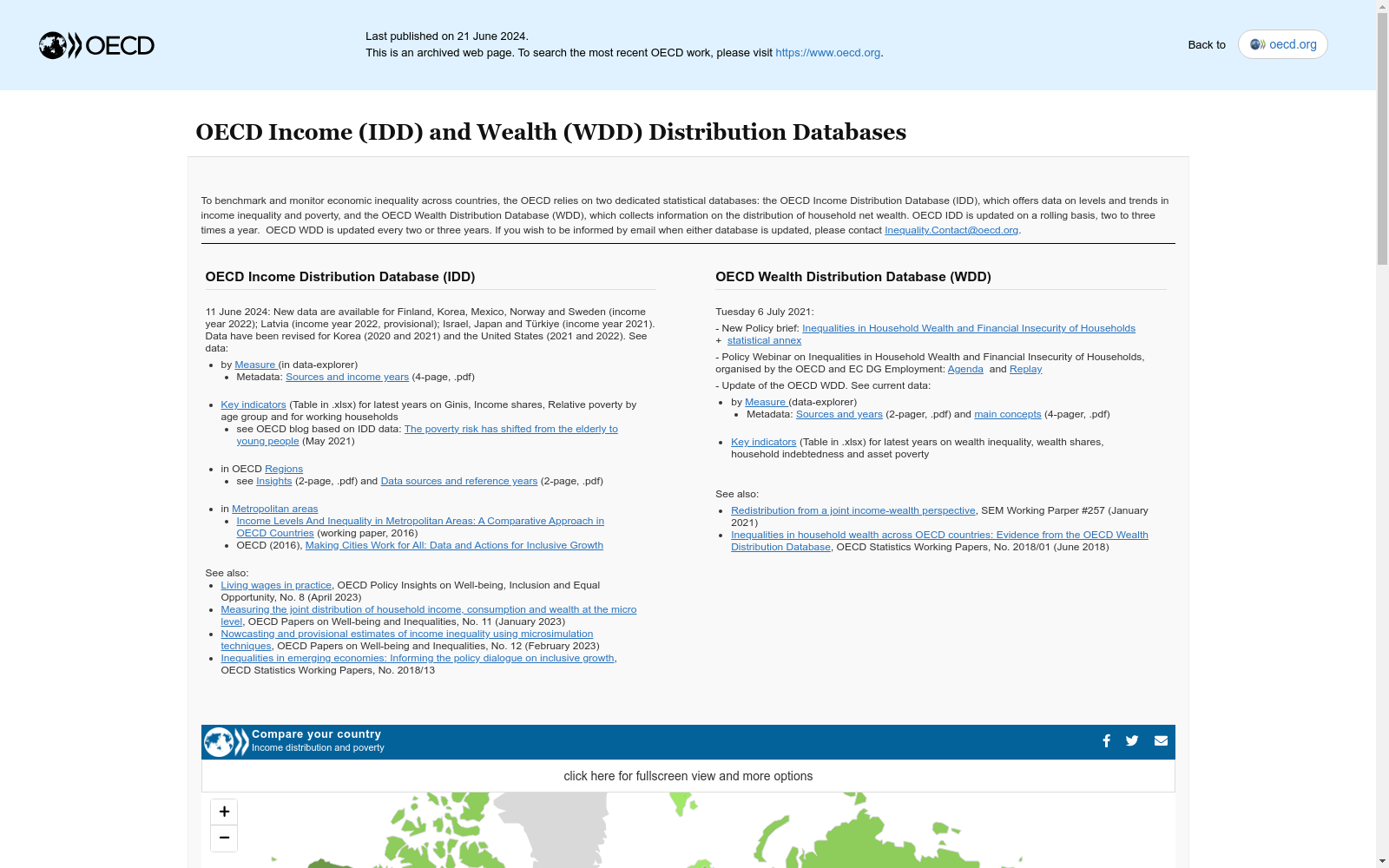OECD Income Distribution Database|收入分配数据集|贫困研究数据集
收藏
- OECD首次发布收入分配数据库,旨在提供成员国和非成员国的收入分配数据,以支持政策分析和研究。
- 数据库进行了首次重大更新,增加了更多国家和地区的数据,并引入了新的收入分配指标。
- OECD收入分配数据库首次应用于全球收入不平等研究,成为国际比较分析的重要工具。
- 数据库再次更新,引入了更详细的收入分组数据,并增加了对收入分配趋势的长期分析。
- OECD收入分配数据库首次与联合国和其他国际组织的数据库进行整合,提升了全球收入分配数据的完整性和一致性。
- 数据库进行了最新一次更新,增加了对新兴经济体和低收入国家的覆盖,进一步扩展了其全球适用性。
- 1OECD Income Distribution Database: Data DocumentationOECD · 2018年
- 2Income Inequality and Economic Growth: Evidence from OECD CountriesUniversity of Rome Tor Vergata · 2020年
- 3The Impact of Income Inequality on Social Welfare: A Cross-Country AnalysisUniversity of California, Berkeley · 2021年
- 4Income Inequality and Economic Policy: Lessons from OECD CountriesHarvard University · 2019年
- 5The Role of Education in Reducing Income Inequality: Evidence from OECD CountriesStanford University · 2022年
China Health and Nutrition Survey (CHNS)
China Health and Nutrition Survey(CHNS)是一项由美国北卡罗来纳大学人口中心与中国疾病预防控制中心营养与健康所合作开展的长期开放性队列研究项目,旨在评估国家和地方政府的健康、营养与家庭计划政策对人群健康和营养状况的影响,以及社会经济转型对居民健康行为和健康结果的作用。该调查覆盖中国15个省份和直辖市的约7200户家庭、超过30000名个体,采用多阶段随机抽样方法,收集了家庭、个体以及社区层面的详细数据,包括饮食、健康、经济和社会因素等信息。自2011年起,CHNS不断扩展,新增多个城市和省份,并持续完善纵向数据链接,为研究中国社会经济变化与健康营养的动态关系提供了重要的数据支持。
www.cpc.unc.edu 收录
中国区域交通网络数据集
该数据集包含中国各区域的交通网络信息,包括道路、铁路、航空和水路等多种交通方式的网络结构和连接关系。数据集详细记录了各交通节点的位置、交通线路的类型、长度、容量以及相关的交通流量信息。
data.stats.gov.cn 收录
YOLO Drone Detection Dataset
为了促进无人机检测模型的开发和评估,我们引入了一个新颖且全面的数据集,专门为训练和测试无人机检测算法而设计。该数据集来源于Kaggle上的公开数据集,包含在各种环境和摄像机视角下捕获的多样化的带注释图像。数据集包括无人机实例以及其他常见对象,以实现强大的检测和分类。
github 收录
学生课堂行为数据集 (SCB-dataset3)
学生课堂行为数据集(SCB-dataset3)由成都东软学院创建,包含5686张图像和45578个标签,重点关注六种行为:举手、阅读、写作、使用手机、低头和趴桌。数据集覆盖从幼儿园到大学的不同场景,通过YOLOv5、YOLOv7和YOLOv8算法评估,平均精度达到80.3%。该数据集旨在为学生行为检测研究提供坚实基础,解决教育领域中学生行为数据集的缺乏问题。
arXiv 收录
中国劳动力动态调查
“中国劳动力动态调查” (China Labor-force Dynamics Survey,简称 CLDS)是“985”三期“中山大学社会科学特色数据库建设”专项内容,CLDS的目的是通过对中国城乡以村/居为追踪范围的家庭、劳动力个体开展每两年一次的动态追踪调查,系统地监测村/居社区的社会结构和家庭、劳动力个体的变化与相互影响,建立劳动力、家庭和社区三个层次上的追踪数据库,从而为进行实证导向的高质量的理论研究和政策研究提供基础数据。
中国学术调查数据资料库 收录
